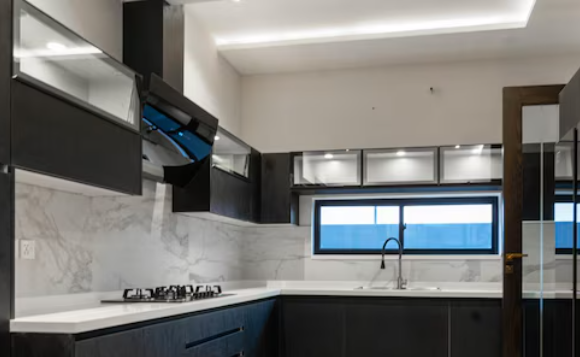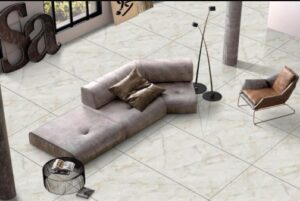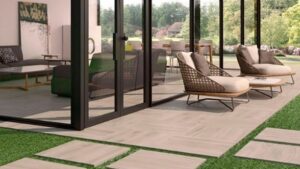Water-resistance and waterproof might sound and look similar. But they have different functionalities in the tile world. Both have distinctive features and capabilities that make them suitable for other spaces. You should also take care of your outdoor parking tiles. Water-resistant tile can resist the penetration of water to a certain level. The waterproof tile completely blocks water. They differ in manufacturing, cost, installation, and numerous other aspects. We have brought a comprehensive blog to end the debate between water-resistant and waterproof flooring.
What Shower Waterproofing Is Needed?
Most people assume that the floor tiles in your shower are 100 percent is waterproof. The ceramic and porcelain tiles on the floor and walls of your shower are virtually waterproof. Grout does a great job of holding tiles in place. Still, it also readily absorbs water through the tiny capillary pores. They are present throughout the mixture.
Those small masonry lines will gradually absorb water. It causes water damage to whatever is underneath your shower. Plywood, drywall, and even the 2×4 studs of your wall or floor foundation are thus susceptible to wear and mold growth over time.
Difference between Water Resistant and Water–Proofing Tiles
Water-resistant floor tiles repel moisture but can absorb some over time. It makes them ideal for damp areas like bathrooms. Waterproof tiles (like porcelain) have near-zero absorption, perfect for pools and wet rooms. Here are the key differences to look for:
- Definition
Water-resistant tiles are designed to resist water penetration for a specific period. It can handle spills or moisture, but will get damaged if water remains for too long. On the other hand, waterproof flooring is entirely impervious to water. It won’t absorb or be damaged; regardless of how long it is exposed to water.
Waterproof wall tiles are a more reliable option for spaces prone to constant exposure to water. They are commonly used in bathrooms or kitchens. It is particularly beneficial for areas where water contact is infrequent and spills can be easily cleaned up.
- Material
Water-resistant tiles are typically made from materials like ceramic or porcelain with a glazed surface. It helps to resist moisture. The tile surface prevents water absorption. The grout lines and tile backing may still allow some moisture infiltration if not correctly sealed.
On the other hand, waterproof wall tiles are designed to be completely impervious to water. These tiles have a non-porous structure. It ensures no swelling, warping, or deterioration. It is also effective in high-moisture areas, such as bathrooms, kitchens, or outdoor spaces.
- Duration
Water-resistant tile is designed to withstand water exposure for a limited period. This could range from 30 minutes to a few hours, depending on the quality and brand of the product. Prolonged exposure to water can cause damage, including swelling, warping, or discoloration.
Conversely, waterproof flooring is built to handle water exposure indefinitely. It can remain in contact with water without any adverse effects. It ensures complete protection even during continuous spills. This durability makes waterproof flooring a better long-term solution. It is best for areas prone to constant water exposure or heavy foot traffic.
- Suitability
Water-resistant tile is more suitable for areas with minimal water exposure. It is more appropriate for living rooms, bedrooms, or hallways. It works well in spaces where spills or accidents are rare and can be easily cleaned up. Waterproof flooring, on the other hand, is ideal for areas with high moisture levels. It is used in bathrooms, kitchens, basements, and laundry rooms.
It is also suitable for outdoor use in patios or poolside areas. The level of water exposure in the intended space plays a crucial role.
· Maintenance
Water-resistant tile requires immediate attention to spills and moisture to prevent long-term damage. Regular cleaning and quick action are necessary to maintain its appearance and durability. Waterproof flooring, in contrast, is much easier to maintain. It can withstand spills, mopping, and even standing water without requiring urgent attention.
Its low-maintenance nature makes waterproof flooring a practical choice for busy households or commercial spaces.
- Cost
Waterproof flooring is generally more expensive than water-resistant tiles. It is due to its advanced materials and manufacturing processes. The higher cost is justified by its superior water resistance, durability, and versatility.
On the other hand, water-resistant tile is more budget-friendly. It makes it a popular choice for homeowners seeking an affordable solution in areas with minimal water exposure. However, the initial cost savings may be offset by repair or replacement costs if the flooring gets damaged by water.
The Conclusion
The difference between water resistance and waterproof tiles is crucial. Water resistance is suitable for spaces that experience occasional splashes, while waterproof tiles are essential for areas with constant water exposure. Contact Perolini; we offer premium-quality tiles designed for every requirement.





